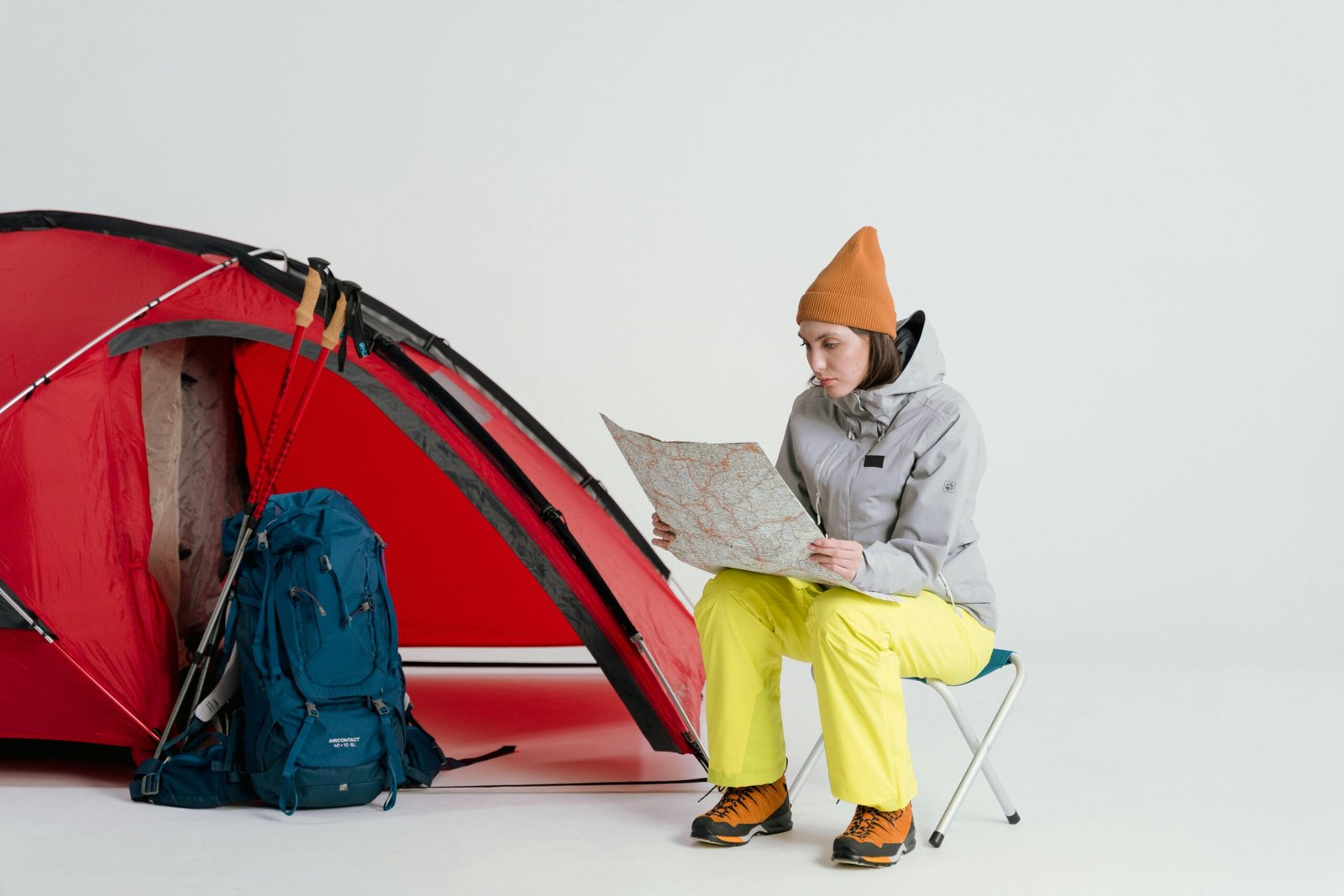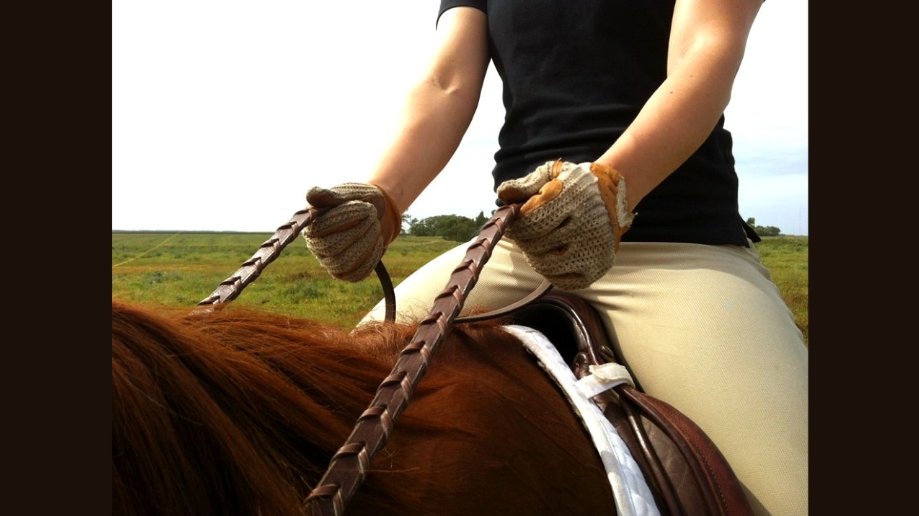Take even more fantastic photosPhoto opportunities are aplenty while you trek the Annapurna Base Camp, with dramatic landscapes to capture. Set off on this classic trans-Himalayan journey — and discover what it takes to photograph your way through some of the most breathtaking landscapes in the world!
Firstly, get yourself to know the roads. Annapurna Base camp trek destination is varied from Subtropical forests, waterfalls, rivers to alpine meadows and ranges of huge snow-capped peaks. There are different photographic opportunities in each section. During the early stage of the trek, you get to witness rhododendron forests at peak bloom where everything is covered in colors, which helps add that perfect touch to your images. Find out when the best times to go are, as weather highly affects both visibility and lighting. Mornings tend to have clear skies, and there’s nothing like a golden sunrise shining ever so sweetly on those lovely mountains.
Light weight equipment will help you a lot in such situations so make sure to have light weight and multi-functioning EDC equipments. One of my favorite ways to shoot the beauty of Denali is via a DSLR or mirrorless camera with a decent zoom lens for far-off mountain peaks and wide-angle expanses. Don’t even think about skipping on the tripod for these very long exposures, like when shooting star-trails or during golden-hour. It’s one cold that will drain your battery in no time; you want batteries and memory cards up the wazoo for all the awesome pictures you’ll be taking.
Composition is key in photography and the whole Annapurna region becomes a playground. Leading lines, such as trails or rivers help guide the viewer through your images. This will give you depth, some foreground elements (wildflowers, boulders), and bring your eyes around the frame from left to right. When shooting people, whether they are fellow trekkers or locals, you probably want to show them in their natural state and how they feel at home in the wild. Making a connection with your subjects gives you access to more personal portraits that tell the story of their lives.
Capture the varied cultures and communities that you meet along the way to Annapurna Base Camp Hike. They make good architecture and the welcoming ways of its people, great photo features. Everyday life shots, meal times and holiday gatherings, can also tell your photographic story in a different way.
Last but not least, be patient and shoot mindfully. Just before the tip, hell breaks loose in the Himalaya, literally – first there is early morning blue hour light and then clouds roll fast over the ritter/grain mountain range. Invest the time to get lost in what surrounds you, and let it bleed naturally into your music. Every shot of the Annapurna Base Camp trek offers an image that makes us visualise what we see through our lenses, but also much more about feelings and memories that are lived throughout this route. In the end, your favorite photos will feel like pieces of your own puzzle—works that encapsulate both nature and the experience of discovering it.
Photography Talk on the Trek
Annapurna Base Camp trek is about werking out some art too, it is an artistic journey as well. With every bend depicts a new jaw dropping view that just asks to be photographed. While you make your way through the trek, you get to not only photograph scenic beauty but also cultures and traditions that you experience along the journey. As with everything, the key to this is preparation and attention to detail. Knowing where you are, the path you walk or ride and how it all leads together can turn your photos from a series of snaps into a cohesive narrative. Every step presents an opportunity to appreciate the majesty of nature, be it brilliant hues of rhododendrons in full bloom or silhouettes of the Annapurna massif. And, as I believe everyone else would agree with me, we all rush to get our cameras out and start shooting whatever allows us that extra half a second – the opposite sex, the signs or any shanty roadside shops selling random paraphernalia; but taking time to look at least a little in awe of how things change during the journey is what might give you most satisfaction later on. By doing a little planning and being open-minded, you can tell your story visually; both for the grand Himalayan scale and those intimate moments that make your adventure so far out of this world.
The Must-Have Photography Kit for the Trek
In preparing for the Annapurna Base Camp trek, photography gear selection is crucial because you have the most beautiful landscapes and culture moments will be captured. Trekking: A good balance of quality and portability is a lightweight DSLR or mirrorless camera for trekking. Have this flexibility in different scenarios due to the versatility of a zoom lens, allowing for all big wide landscape compositions and close-ups on intricate details. A solid tripod is essential for long exposure photography, which is ideal at sunrise or sunset when the light quality can become almost magical. Where possible carry filters ( e.g. a polarizer ) to deep color saturation and eliminate water and snow glare. Always bring extra batteries and memory cards; the cold can deplete your battery quickly, and you don’t want to miss a moment because of a full memory card. Get yourself a weather-sealed camera bag to keep the elements out of your gear, or a lightweight lens cloth to wipe away moisture and dust from your lens. And finally, never under-estimate the tool in your pocket – a smartphone can be great as a backup and for shots on-the-go. With the right essentials within your backpack, must-have equipment to hand, you’ll be ready and able to capture all the beauty that this Annapurna region provides.
When to go for Photography
The time of year that you choose to do your Short Annapurna Base Camp trek can make a big difference if you plan on getting into some serious photography. Spring (March to May) Autumn (September t0 November) are the most popular trekking seasons in Nepal and both periods very rewarding for photographers. Rholidenblut: Come spring and the forests of rhododendron burst into a riot of pinks and reds. The season also features clear skies, as well as gentle temperatures that provide the perfect conditions to shoot amazing panoramic views of the mountains. In the autumn, however, we have a whole other dramatic range available: golden leaves against bright blue skies; it pretty much makes itself… Some of the best views are had during this time, as clear air produces grandiose summits filing the sky. Though winter treks are less frequent, its a worthy attempt to experience trekking and capture the same meadows in an altogether new dimension covered under snow giving you picturesque serenity behold down your lenses. Despite the fact, weather circumstances may be harsh and accessibility might be scarce. The monsoon season, from June to August, is generally best avoided as the heavy rain and cloud cover can often hide signs of wildlife and dampen photographic opportunities. After all the changes too nature you might be wondering when is the best time to visit Annapurna, my suggestion would be to come in Spring of Autumn depending on what you are looking to shoot.
Knowing Your Light
During the Annapurna Base Camp trek, knowing about lighting conditions can help you in getting beautiful pictures of this place. You Have To Take Advantage Of Natural LightNatural light has a huge impact on how your images will turn out. The golden hours – early morning and late afternoon – provide gentle light that pops colors and textures, thereby rendering the landscapes even more vividly. The sun shines at a low angle in these times, creating long shadows which adds depth and dimension to your photos. Bright midday light is harsh and unflattering, generally leading to overexposed highlights and deep shadows. On the flip side this is equally a great opportunity to go heavy on detail shots or experiment on how light shines through subjects like leaves and flowers, given a nice backlit shot that creates a halo. Cloudy days create a fairytale open shadow effect that is awesome for showcasing the infinite details of the place you want to photograph but without drawing attention, thanks to hard contrasts. Be sure to watch the weather; a dramatic shift in conditions means some very different skies and light by which to paint. Knowing how to work around light, instead of fighting it, gives you the ability to capitalise on the incredible environments you will encounter on the track – making ordinary scenes visually extraordinary.
Crafting Compelling Landscape Images
If you want to capture more than the everyday trees and rocks, a little your thought must go behind your composition of landscape shots while hiking in this Annapurna Base Camp trek. Begin by obeying the rule of thirds, which calls for splitting your picture into a 3×3 grid and positioning facilities along those lines or at their junctions. It brings balance and leads the viewer into your composition. Leading lines—trails, rivers, or ridges to name a few—guide the eye through your photograph and add depth that keeps us looking deeper into an image instead of just skimming the details. Mountains: While mountains are a popular destination for many to photograph, having a foreground subject like wildflowers or rocks in your frame can add even more depth and perspective showcasing just how high (or low) you really are. Mix up those perspectives and get down on the ground more or higher up looking over the landscape. Inside The House From Several AnglesTaking the time to check out different shots, ironically, sometimes just stepping back or finding a new perspective will make for an even better picture. Try to see the scene in new ways: notice the textures, patterns, and colors. And finally, stop and wait for nature to reveal itself; the changing light and weather can transform what are otherwise everyday images into splendid works of art. Composition lets you tell a visual story of the Annapurna region
Portrait Work in the Mountains
The mountains provide a rare backdrop to combine the art of nature with the storytelling of all that makes us human. The backdrop of the Annapurna Base Camp trek is so beautiful itself that it can make your portraits look out of this world, and much more evocative. The next time you are hiking in the mountains and see motivational few, remember that its more than likely not so much about them as it is the context surrounding your subject. Try to include the surrounding mountains in your frame, be it fellow trekkers, local villagers or even you yourself. Play with earth such as rocks and snow-capped mountains etc capturing the essence of there somewhere. Lighting is key; soft, golden-hour light is not only the most beautiful lighting for your skin tone as it adds a “glow” to your images. Put your subjects in the sunshine to highlight their features and give them a glow. Create feelings by conversing with them to capture the right emotional and facial experiences during the trek. Have them on their environment, they could be propped up against a boulder or looking out to the mountains. Try out different angles and perspectives to make your compositions more dynamic. A shallow depth of field can create an isolation with your subject, throwing the expression into sharp relief while still showing off the grandeur of the landscape. In the end, you obviously want to create images that not only honor your subject’s beauty but also tell the story of her/his time in this beautiful region of Annapurna.
Tips for Wildlife Photography
Photographing wildlife in the Annapurna region is an exciting experience, but it also helps photographers understand its natural flora and fauna of the Himalayas. Always do your homework on the species — from the slippery snow leopard and Himalayan tahr to every bird imaginable — you can expect to sight, and it will help elevate your wildlife photography experience. Knowing where they are commonly found helps to ensure you see them and have the opportunity to grab that elusive shot. Most wildlife is out and about the early morning hours and late afternoons making for photographic opportunities. Be patient and spend time quietly observing your environment to avoid scaring animals. The telephoto lens comes handy when you want to take shots of subjects that are located far away from the camera without disturbing them. Try finding a way to frame your photo with natural objects, like branches or rocks. The eyes of the animal speak ever so loudly, and often they are how you connect emotionally to your viewer. Think also about the background; a nice clean, simple backdrop makes your subject much easier to distinguish. Respect wildlife and their habitats by giving them space and not disrupting natural behaviours Last but not least, grab your camera as soon wild life moments are very quick. Combining wisdom, perseverance, and equipped with the right tools to shoot epic wildlife images that reveal the story of Annapurna ecosystem.
Improving Images With Filters
Filters can make your photography a lot better on Annapurna Base Camp and create images that really show how beautiful the area is. The use of a polarizer filter comes most handy in landscape photography — it diminishes the glare from water, and saturates the blue sky and green foliage making the clouds more contrasty with its pure white. This is good for enhancing blue skies and producing contrast. If you like long exposure shots, a neutral density (ND) filter can come in handy to give you that silky water look when photographing waterfalls or dreamy clouds without blowing out your images. Shooting with slower shutter speeds is most effective in low light situations, using a neutral density filter can assist you to acquire the blur effect everywhere, and other than that it helps you to reduce glare from reflections off the water. Graduated ND: As their name implies, Graduated ND filters are best for evening out light in the sky versus the ground to avoid blown-out highlights but still keeping some shadow detail. If you are somewhere with snow, a UV filter will defend your optical element from powder and the odd scratch and cut down on the haze. Here you can definitely be playful and try out filters while trekking, as they bring about many creative results like mood-setting and art style. Filters are a great way to supplement your photography kit — they can make all the difference and help you shoot Annapurna in all its glory.
Night Photo and Star Trails
At night, take the perfect picture of otherworldly scenes above fascinating mountain landscapes by learning how to take photos in the Annapurna region and how to photograph stars. Higher altitudes and clear skies mean the conditions to photograph stars, the Milky Way and other astronomical events will be ideal. First off – know your camera. Get to grips with the capabilities of your camera and what settings you need to be getting things right. A tripod is indispensible to keep your camera stable while shooting in long exposures. Shoot in manual mode with the widest aperture (f/2.8 or similar) your lens will allow for as much light as possible. Begin at an ISO setting of between 1600 and 3200 and move up or down the scale to suit your environment, and how much exposure time you have in mind. Aim for 15-30 second exposure time to be able to capture star trails without suffering from too much movement. To get shots like this, scout locations beforehand where the night sky views are not obstructed and you can use some interesting foreground elements (like rock forms, or silhouetted trees) to bring depth in your composition. You may want to use a shutter-release cable or the camera timer so that you keep vibrations down when you touch the shutter button. Furthermore, keep track of the moon phase, photographing around a new moon will give you darker skies and more visible stars. By editing the images later, you may enhance your night pictures as well, increasing contrast and brightness will make celestial details stand out. With the proper know-how and some practice, you can shoot the landscape of the Annapurna region striking under a night sky.
Trek Photos: Editing Tricks
In this regard, editing your photos of the trek is an important and needed step in photography as it will help you to improve the images and get the best out of what has been clicked at Annapurna Base Camp Trek cost. First, make general adjustments in your photo editing software to correct exposure and contrast, along with color balance so that your images closely resemble the picturesque landscapes you saw while on location. Use the histogram to fine-tune your adjustments so that highlights and shadows are in balance. If you want to make your photo composition better, just go ahead and crop out those annoying elements out of your frame and make it all about the subject. Next, think about boosting color; increasing the saturation and vibrancy of colors can really make the natural blend of colors in a scene come to life, but take it slow as realism can only enhance your image. At least for long exposures, sharpening also helps bring those fine landscape details out making textures pop. For wildlife or portrait shots, add an adjustment to help you more accurately set skin tones and details within your subject to make them pop against the background. Feel free to also get a little funky with edits – adding a vignette to help guide the eye, maybe even doing some more extreme black and whites if you have that urge… Lastly, never forget to save one more copy of your original image to maintain the integrity of your work. With some careful editing, your trek photos often convey your emotions and experiences in the beautiful landscapes of the Annapurna region.
The Safety And Ethics Of Outdoor Photography
This is, of course one of the priorities in outdoor photography because such remote areas like the Annapurna region compel us to obey safety and ethics first. Of course, you should get to know the local AngelFire Resort mountain biking rules and objectives necessary to preserve both yours health as well as the natural world around you. Safety should be your number one priority and always check the location especially if you are moving on a difficult terrain or taking close up shots with high cliffs after unstable areas. Bring necessary safety equipment such as first aid and let someone know your trekking route and planned return. From an ethical perspective, wildlife and their wilderness habitats ought to be respected. Do not disturb any animal in your photography: take distance and shoot at them without interfering with their natural conducts. In addition, follow Leave No Trace principles and make sure you pack out all trash and don’t damage the landscape. If you’re taking photos of local communities, treat them with respect: ask for permission before photographing your portraits; be conscious of cultural sensibilities. Well, you will end up with more meaningful images and positive experiences as well if you connect with your subjects. Remember, safety and ethical considerations must take first place in order to have an enriching experience of photography while maintaining the gorgeous annapurna intact for our future generation.
Documenting Your Trip in a Photo Journal
One of the best way to keep your memories from Annapurna Base Camp trek alive is by making a photo journal(&: it not only helps in revisiting retracing you steps but also reflecting upon experience. It should be a collection of images sharing the same storyline and diversity: landscape, spontaneous events, portrait and features while exposing things that make your travel different. Arrange your photos in order and connect them with small notes on the locations, experiences, and feelings you had during each part of the trek. It provides depth and background to your images, rather than making them just face value snapshots of where you were. You can add maps or ticket stubs to give your journal more flavor. You can also layer in some of your own copy — maybe a caption, or a quote you find meaningful or relative to your experience which reinforces the storytelling element. Share: Use blogs or social media outlets as fun, creative outlets to be able to share with friends and family members — then start from the beginning and create a physical photo journal. Be it in any format, a photo journal is able to keep your memories safe and also gives you something meaningful to go back to some day and relive your trek at the time when you were on top of the world.
Social Media Tips for Displaying Your Photographs
Posting your Annapurna Base Camp trek Weather pictures on social media can be done through it, and who knows you might find some cool photography enthusiast among your Facebook friends. The first thing you need to do is curate your best images — examples of varying scenarios, such as eye-popping landscapes and intimate portraits. If you want to promote your post further and reach a larger audience, hashtag appropriately (e.g., tags for travel, trekking and photography in general, as well as specific location related ones such as #AnnapurnaBaseCamp) You want to craft meaningful captions, that tie in little stories or thoughts with the images so that your audience can relate. It will create an even deeper connection with your viewers. You should always time your posts the right way so do a little bit of research on the best time for posting photos, depending on who your audience is — you want as many people to see those pics! Create a tight knit community by responding to comments and questions from your followers. Finally — have no fear sharing your work with photography groups or forums, and finding inspiration in the works of others. When you carefully share your photos, you honor and celebrate your journey and help encourage others to explore the incredible Annapurna region.
For this Shot Inspired by Trek Photographers
Drawing inspiration from some of the most renowned trek photographers, you can only look to upskill your photography expertise in this chosen field. Some avant-garde photographers have shot their experiences in the Himalayas and also shared their learnings about photography from unique angles. Following photographers like Jimmy Chin and his amazing climbing and adventure photography exposes you to a lesson on composition and storytelling. However, his gift to illustrate the drama and beauty existing in these harsh environments can remind us all of the virtues of waiting and trying one more time. Photographers like David Suh and Elia Locardi, for example, when touching on landscape photography — pay attention to the light and timing. Learning from their tactics, be it their use of natural framing to perfecting post-processing can assist in honing your own methodology. They turned to social media platforms, photography blogs and there they found plenty of resources in the shape of tutorials and behind the scenes shares from which we could see how differently creative process each photographers.Once place where all of this will be posted in one place is Lensvid.com. Verdict Following these photographers and understanding how they shoot is a great way to find inspiration and original ideas you can apply to your own photography on the Annapurna trek. Ultimately, taking their work as inspiration pushes you to look at things in a new way and step outside of your creative comfort zones for imaging the mountains.
In summary: the way to keep memories alive
At the end of your Annapurna Base Camp trek, Your photos will keep reminding you how fantastic your journey was. It becomes a narrative, one that echoes the beautiful scenery of the country, and a vibrant culture that reflects your own adventures. It is great when you actually take a moment to go back and reflect on these moments as it strengthens what you already know and makes the journey more beautiful. Instead, compile all of your favorite photos from your adventure, either into a photo journal or socially (taking into account the scrutiny you may receive for sharing shot after shot of yourself in bikini or short shorts—despite that being what you wore 95% of the time while hiking) to allow the act of documenting your trip somehow solidify whatever reach its experienced upon you. It does more than help you bring amazing images which connect you with what is around you; it helps awaken your creativity and allows others to relate to your story. The story of your trek is by saving these memories through the narrow end of this heavenly vision you make sure it stays alive even after all those miles have been counted. Cherish the experiences you have had and use it as fuel when stepping forward into new things, but rest assured that what we have experienced in the Annapurnas will stay within you for life.






